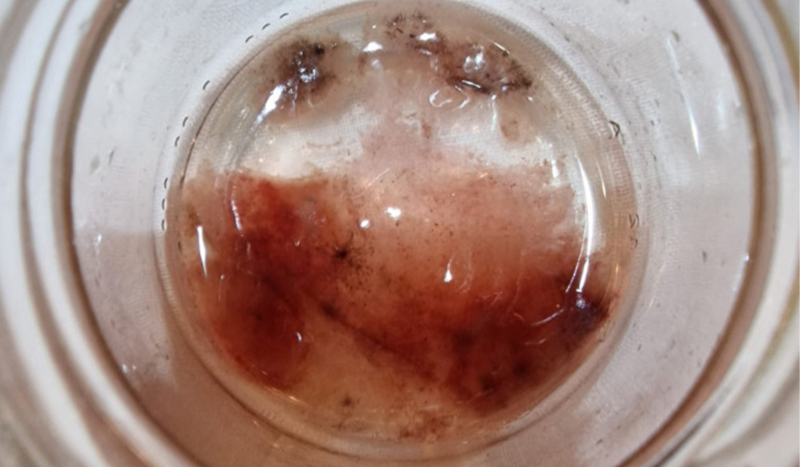
Courtesy Photo / the Daily Compass
CV NEWS FEED // Faithful from the Diocese of Ravenna, Italy, are suing over the destruction of a consecrated host that occurred after the investigation of a possible Eucharistic miracle.
New Daily Compass reports that the investigation began after a particle of the Eucharist was found in a pew on January 24, 2023, at St. Mary of the Assumption parish in Savarna, Italy. The sacristan placed it in the ablution cup or “lavabo” bowl, which the priest uses to cleanse his hands before consecration.
On January 28, the particle turned red, and the parish priest, Fr. Nicolò Giosuè, decided to keep it at a local convent. After the specimen did not decay, Fr. Giosuè took it to a laboratory. Dr. Cristina Antonini tested the sample and discovered traces of blood. New Daily Compass reports that after the doctor stabilized the host, she “found traces of granulocytes, red blood cells and white blood cells in a condition considered exceptional.”
Dr. Antonini also found that the consecrated host showed no signs of autolysis or hydropic degeneration.
After these tests, Bishop Lorenzo Ghizzoni sent the sample that Dr. Antonini had stabilized and the rest of the host to the Pievesestina laboratory, where it was tested by the local health authority of Romagna.
The tests found no presence of blood, which the lab communicated to the Bishop over the texting service WhatsApp. New Daily Compass states that subsequently the samples were destroyed. The Ravenna diocese had a confidentiality agreement with the laboratory.
As a result, faithful are suing through lawyer Francesco Minutillo for “insulting the Catholic religion by denigrating or damaging sacred objects.”
Minutillo wrote, “The complaint filed highlights some possible irregularities in the handling of the case of the alleged Eucharistic miracle of Savarna by Archbishop Lorenzo Ghizzoni.
“If the destruction or dispersal of a consecrated host and related biological samples were confirmed, this would be a serious episode, possibly amounting to the defamation of an object of worship central to Catholic doctrine.
“Other aspects worthy of investigation relate to the handling of the samples by the health authorities of Romagna, in the person of Professor Vittorio Sambri.
“If the destruction of the artefacts had indeed taken place without adequate documentation or supervision, this could indicate a violation of the transparency and traceability protocols expected in a case of such importance.”
The lawyer also questioned the communication between the Bishop and the laboratory, which relied on a WhatsApp message instead of a formal report. He wrote that the apparent absence of a formal report “raise[s] a number of doubts about the correctness of the process.”
He also pointed to the confidentiality agreement, stating that it “may have limited transparency in an affair that is of interest not only to the faithful but to the entire public.”
“We will not stop until we know what happened to the biological samples of the Eucharist,” Minutillo continued. “We have demanded that any remaining residue be confiscated immediately.
“Strictly speaking, according to legal logic, these are objects of worship (the Real Presence of Jesus Christ, because they come from a consecrated host that was carelessly dropped after communion, ed.), central symbols of the Catholic faith, which as such must be treated with respect and certainly not as material to be disposed of without transparency and respect.”

